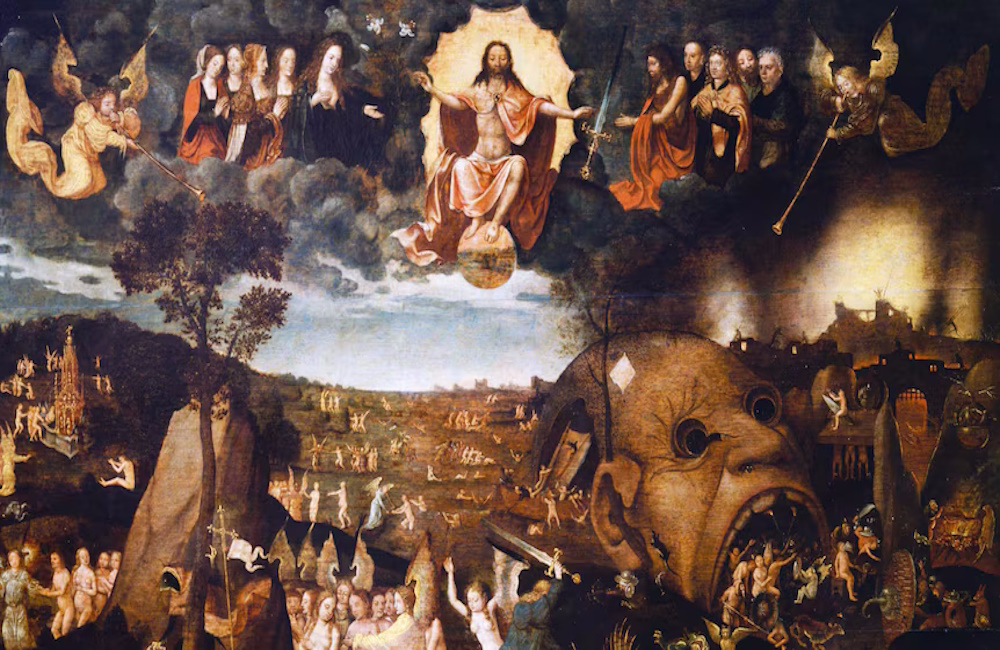The Quranic Perspective: Hints and Interpretations
The Quran speaks faintly about the second coming of Jesus Christ, with most of the Islamic beliefs on this topic derived from Hadith literature rather than the Quran itself. The only Quranic verse often associated with the second coming is Quran 43:61, which states, “And indeed, He (Jesus) will be a sign for knowledge of the Hour, so be not in doubt of it, and follow Me. This is a straight path.” This verse suggests that Jesus will return before the Day of Judgment, though some interpretations see “He” referring to the Quran rather than Jesus. Another passage, Quran 4:157-159, frequently cited in discussions about Jesus’ return, does not address His second coming but instead denies the crucifixion and divinity of Jesus as described in the Bible.
The Hadith Narrative: A Detailed Account of Jesus’ Return
In contrast, the Hadith literature offers a more detailed account of Jesus’ second coming. Key Hadiths from sources such as Sahih al-Bukhari, Sahih Muslim, Sunan Abu Dawood, and Jami` at-Tirmidhi describe various aspects of this event. These Hadiths narrate that Jesus will descend near a white minaret in the eastern part of Damascus, dressed in garments dyed with saffron and with His hands placed on the wings of two angels. He is expected to break the cross, kill the swine, and abolish the jizya (tax on non-Muslims), signifying the end of these practices as all will follow Islam. He will then rule with justice according to Islamic Shariah. Additionally, Jesus will lead Muslims in battle against the false messiah, known as the Dajjal, and ultimately defeat him, establishing peace and justice on earth. After fulfilling His mission, Jesus will die a natural death and be buried.
The Biblical View: A Glorious and Universal Return
The Biblical narrative provides a more comprehensive and detailed explanation of the second coming of Jesus. According to the Bible, from the teachings of Jesus Himself to the writings of the apostles and the Revelation of John, the second coming is portrayed as a grand, global event. Revelation 1:7 declares, “Behold, he is coming with the clouds, and every eye will see him, even those who pierced him, and all tribes of the earth will wail on account of him. Even so. Amen.” Unlike the Hadith’s localized descent, the Bible emphasizes that Jesus’ return will be visible to all, warning against any claims of His coming being restricted to a particular location. In Matthew 24:26-27, Jesus warns, “So, if they say to you, ‘Look, he is in the wilderness,’ do not go out. If they say, ‘Look, he is in the inner rooms,’ do not believe it. For as the lightning comes from the east and shines as far as the west, so will be the coming of the Son of Man.”
Purpose and Impact: Salvation vs. Earthly Rule
According to Christian doctrine, Jesus’ return is for those who believe in Him as the Son of God, the One who died and rose again. Whether dead or alive, believers will be caught up to meet Him in the air. 1 Thessalonians 4:16-17 describes this, saying, “For the Lord himself will descend from heaven with a cry of command, with the voice of an archangel, and with the sound of the trumpet of God. And the dead in Christ will rise first. Then we who are alive, who are left, will be caught up together with them in the clouds to meet the Lord in the air, and so we will always be with the Lord.” There is no scriptural record of Jesus dying again; He died once, rose again, and now lives forever. After the believers are gathered with Him, the Bible assures that “we will always be with the Lord.”
Conclusion: A Call to Truth and Preparation
In conclusion, while both the Bible and the Quran address the second coming of Jesus Christ, their portrayals differ significantly. The Bible offers a coherent and redemptive narrative that aligns with the teachings of Jesus and the writings of His followers. The Quran’s depiction, while respectful, lacks the depth of the salvific mission emphasized in the Bible and was written centuries after Jesus’ departure from the world. The Hadith literature, which describes the second coming of Jesus in more detail, draws from non-canonical sources not recognized by mainstream Christianity. Jesus Himself proclaimed, “I am the way, the truth, and the life. No one comes to the Father except through me” (John 14:6). This declaration invites everyone, including our Muslim friends, to explore the profound truth of Jesus’ divine mission and the hope of eternal life through faith in Him.
